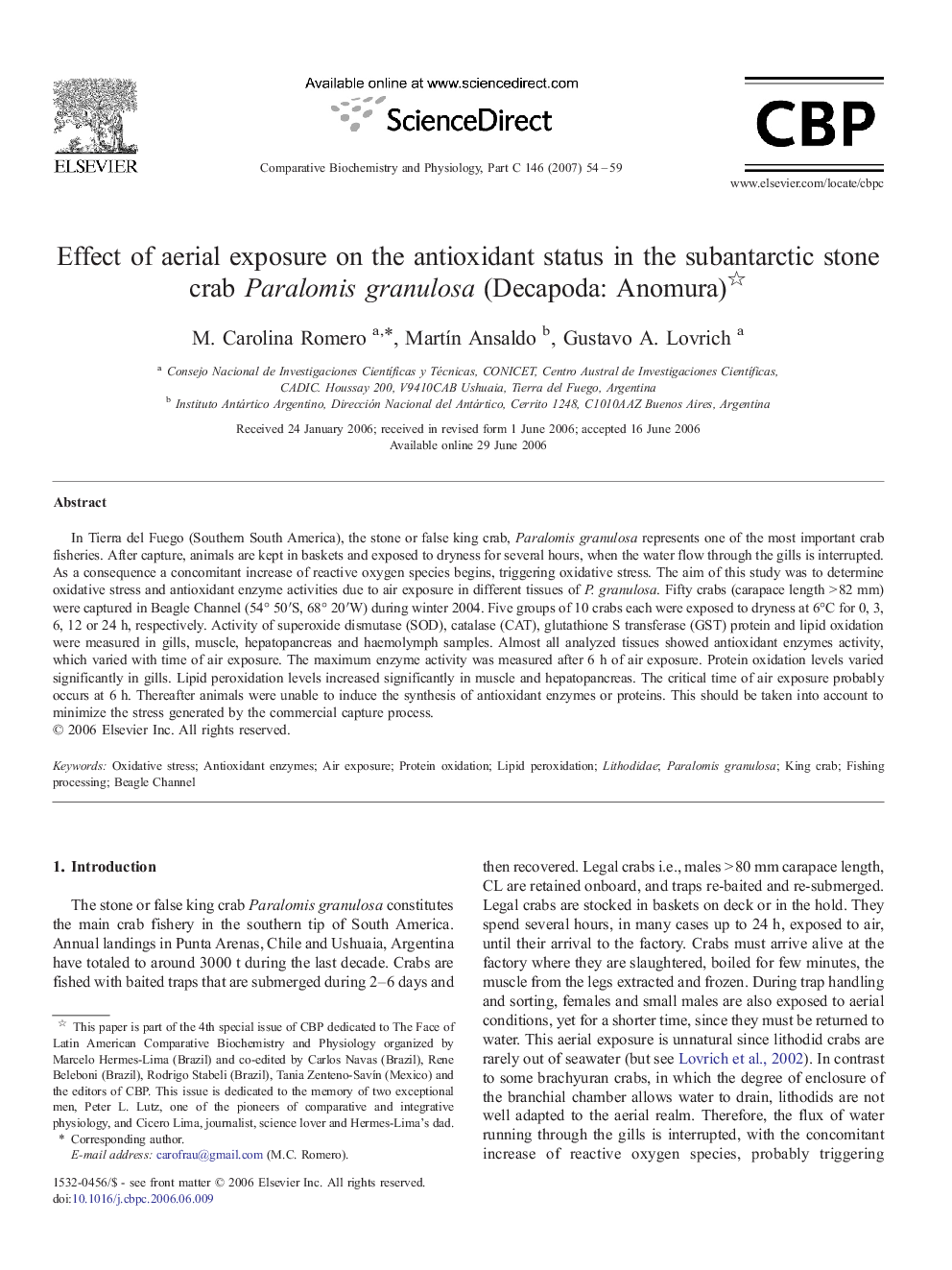| Article ID | Journal | Published Year | Pages | File Type |
|---|---|---|---|---|
| 1977930 | Comparative Biochemistry and Physiology Part C: Toxicology & Pharmacology | 2007 | 6 Pages |
In Tierra del Fuego (Southern South America), the stone or false king crab, Paralomis granulosa represents one of the most important crab fisheries. After capture, animals are kept in baskets and exposed to dryness for several hours, when the water flow through the gills is interrupted. As a consequence a concomitant increase of reactive oxygen species begins, triggering oxidative stress. The aim of this study was to determine oxidative stress and antioxidant enzyme activities due to air exposure in different tissues of P. granulosa. Fifty crabs (carapace length > 82 mm) were captured in Beagle Channel (54° 50′S, 68° 20′W) during winter 2004. Five groups of 10 crabs each were exposed to dryness at 6°C for 0, 3, 6, 12 or 24 h, respectively. Activity of superoxide dismutase (SOD), catalase (CAT), glutathione S transferase (GST) protein and lipid oxidation were measured in gills, muscle, hepatopancreas and haemolymph samples. Almost all analyzed tissues showed antioxidant enzymes activity, which varied with time of air exposure. The maximum enzyme activity was measured after 6 h of air exposure. Protein oxidation levels varied significantly in gills. Lipid peroxidation levels increased significantly in muscle and hepatopancreas. The critical time of air exposure probably occurs at 6 h. Thereafter animals were unable to induce the synthesis of antioxidant enzymes or proteins. This should be taken into account to minimize the stress generated by the commercial capture process.
